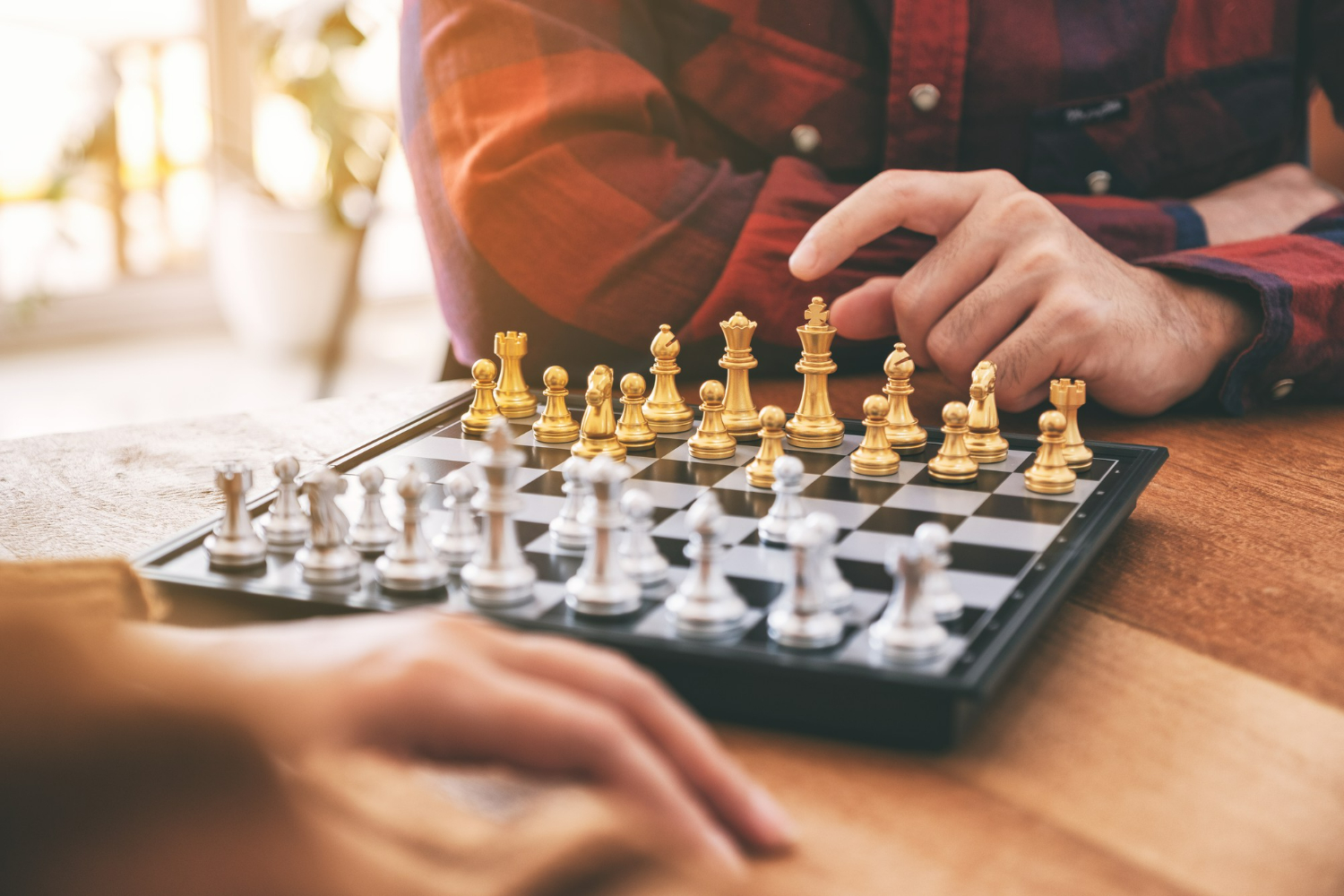Games of Strategy & The Human Mind

In terms of competitions, sports most captivate mainstream audiences, as they evoke fight-or-flight responses in competitors and spectators, tapping into tribal mentalities, and acting as playgrounds for high-stakes drama. All these factors go a long way in producing the adrenaline rush viewers crave. Yet, games that involve deep thinking, while not as popular among the general public, still have their place as intellectual challenges that can foster skills that are super beneficial in life. In a sense, they act as microcosms for our own behavior and social dynamics.
Strategy games come in all shapes, but most require players to anticipate opponents’ moves, adapt to newly created circumstances, and manage uncertainty. They help our minds get better at things like pattern recognition, memory, and emotional regulation. By playing them regularly, people not only boost their level of cognition but also get a deep grasp of the bias that limits them. Thus, they are also a window into learning, interacting, and thinking.
Neuroscience shows that strategic thinking activates the prefrontal cortex, the part of the brain responsible for decision-making and impulse control. Neuroplasticity research suggests that consistent engagement with complex tasks can alter the structure of an adult human brain, as it is prone to morph into environmental demands. Below, we explore the mind-and-strategy game link and how partaking in the latter can affect how we think and act.
Strategic Thinking & Cognitive Process
Attention, memory, and problem-solving are the three essential cognitive processes the brain focuses on during strategy games. In some of these, players must manage multiple information streams simultaneously. For example, in poker, they have to perceive how their opponent is acting, trying to predict how he will act next while evaluating the cards in play and the probability of outcomes. This holds even when players enjoy card gambling at Bitcoin poker sites where they are not face-to-face with those they are playing against.
During poker sessions or ones from any such multifaceted games, the brain, on account of its limited working capacity, prioritizes moves under time pressure. That is something that gets labeled as mental heuristics.
In a more linear strategy game like chess, data shows that expert players continuously outperform novices by recognizing patterns in the game far more effectively. They are able to do this because their prefrontal cortex, which allows them superior planning, and their parietal cortex, key for spatial awareness, are more developed.
It goes without saying that winning, or striving to win in all games, engages our reward systems, releasing dopamine. That is a neurotransmitter known as the happiness hormone, and it is connected to win anticipation, motivating players to get better by refining their tactics.
The Impact of Emotions on Strategy
Of course, emotional regulation profoundly shapes decision-making, as anxiety impairs risk assessment. The amygdala, the brain’s emotional processing center, is part of our limbic system and can override logical thought when fear or excitement spikes appear. Since beginners are not used to competitive settings, they do not have decent control of this part of their bodies, and this often causes them to make impulsive moves.
Positive emotions, like confidence, can improve performance. No doubt. Yet, they can also lead to overconfidence, which can make players take on bigger risks while ignoring factors that point this may not be the best of ideas. In chess, overconfidence can be expressed as underestimating an opponent’s counterattack. Overconfidence, usually stimulated by a stream of events going one’s way, is a cognitive bias that blinds to potential threats. Metacognition training, or reflecting on one’s own thought processes, can mitigate this.
Research done in 2009 by Antonio Rangel, Colin Camerer, and Todd Hare indicates that optimal decision-making demands a high level of self-control. That involves the ventromedial prefrontal cortex, which computes a signal integrating desires and long-term goals, and the dorsolateral prefrontal cortex, which prioritizes goal-consistent choices. Emotional arousal disrupts prefrontal cortex activity, which impairs strategic planning, and this, naturally, impacts game results.
Learning & Strategy Games
Neuroplasticity is our brain’s ability to change via growth, attaining new information. This organ can reorganize its neural connections, technically, to adapt and learn. When engaging in complex tasks, our brain increases gray matter, regions tied to skill acquisition. Repeated play of strategic games, where new scenarios emerge, requires one to adapt, which goes a long way in strengthening neural pathways. That especially holds for the hippocampus, which supports memory consolidation.
Deliberate practice is vital, as the brain can refine its pattern recognition abilities only through hours and hours of focused practice. Neuroimaging tells us that even pro gamers have enhanced connectivity in the frontoparietal network, which helps them multitask and have much improved strategic flexibility compared to the regular Joe, which stems from their continuous engagement in activities that demand tactical and quick thinking.
Some say that over-reliance on familiar strategies hinders adaptation and that intense practice can lead to burnout. It boosts stress hormones and impairs learning. Thus, there is a sweet spot to everything, as there is a point where excess training/play becomes an obstacle. Moreover, outside pressures, such as tournament rankings or financial rewards, also increase stress and accelerate burnout quite sizably.
